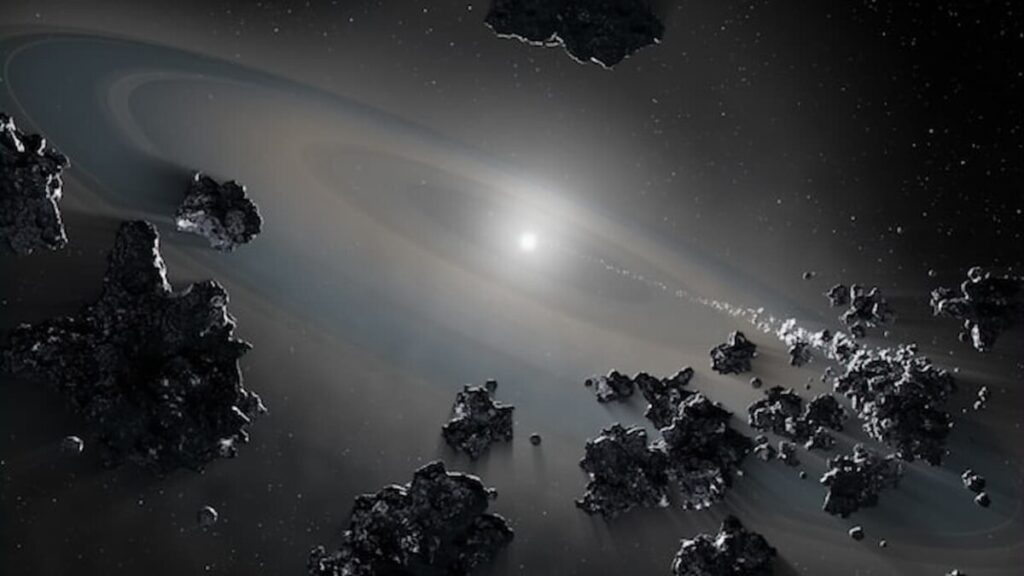
Milky Way residents received a surprising update this week as astronomers revised the likelihood of a collision with the nearby Andromeda galaxy to an even-money proposition. This adjustment, a stark contrast to earlier studies that deemed the merger nearly inevitable, was announced by a Finnish-led team of scientists. Their findings, published in Nature Astronomy, were subsequently shared by the Associated Press, bringing relief to those concerned about our galactic future.
“As it stands, proclamations of the impending demise of our galaxy seem greatly exaggerated.”
– Till Sawala et al, Nature Astronomy.
While a 50/50 chance of a galactic collision might sound alarming, the new research suggests that if such an event were to occur, it would be considerably further in the future than previously thought. The timescale for this possibility is now estimated at 10 billion years, compared to earlier projections of 5 billion years. Given that these timescales exceed the lifespan of our Sun, immediate concerns are unwarranted.
Understanding the Complexity of Galactic Predictions
Why is predicting a galactic collision so complex? Surprisingly, the challenges are akin to predicting outcomes in games of chance like craps. The unpredictability stems from the chaotic nature of systems, where minor initial variations can lead to vastly different outcomes. This principle, known as chaos theory, highlights the difficulty in making precise measurements and predictions.
Of Dice and Galaxies
Fans of Jurassic Park might recall Jeff Goldblum’s character, Dr. Ian Malcolm, discussing chaos theory. In simple terms, a chaotic system is one where small changes in initial conditions can significantly alter outcomes. This concept applies to both galactic predictions and games of chance. Although no one is altering Andromeda’s trajectory or manipulating dice mid-roll, precise measurements of speed and size are inherently limited. Even a tiny margin of error can mean the difference between a galactic catastrophe and a near miss.
For dice, the chaos arises from their interactions with surfaces, while for galaxies, it involves gravitational interactions among numerous celestial bodies. With more than three stars in both the Milky Way and Andromeda, predicting their future paths becomes a complex task.
Monte Carlo Simulations: The Intersection of Science and Gambling
The connection between predicting galactic events and gambling is not merely coincidental. The Monte Carlo method, named after the renowned casino in Monaco, is a standard approach in such research. This method involves running multiple simulations with varying inputs to account for uncertainties, much like rolling dice repeatedly to determine the odds.
By simulating numerous scenarios, scientists can identify patterns and probabilities, providing a statistical foundation for their predictions. This method is particularly useful in chaotic systems where precise measurements are challenging.
Asteroids: A More Immediate Concern
While the potential merger of the Milky Way and Andromeda, humorously dubbed “Milkomeda,” is a distant possibility, astronomers also employ Monte Carlo methods to address more immediate concerns, such as asteroid impacts on Earth. Although these collisions occur regularly, most are minor. However, the frequency and impact size are directly correlated, with catastrophic events like the one that likely led to the dinosaurs’ extinction occurring roughly every 100 million years.
Can We Predict and Prevent Asteroid Impacts?
Asteroids are easier to model than galaxies due to the shorter timescales involved. However, challenges remain, such as the vast number of asteroids and their detection against the dark backdrop of space. Despite improvements in tracking, only about 36,000 asteroids are currently monitored, and only nine collisions have been predicted before they occurred.
Mapping asteroid trajectories involves significant chaos due to their low mass relative to other solar system bodies, leading to potential deflections during close encounters. As a result, small variations in these encounters can drastically alter their paths.
Ongoing advancements in Monte Carlo simulations aim to enhance our predictive capabilities, potentially allowing us to foresee and mitigate dangerous asteroid strikes. Meanwhile, experiments are underway to explore deflection techniques should a threat be identified.
As we continue to gamble against cosmic odds, it’s worth reflecting on the relative simplicity of predicting outcomes at a roulette table compared to the complexities of celestial mechanics. At least at the casino, the stakes are limited to monetary losses rather than planetary consequences.







